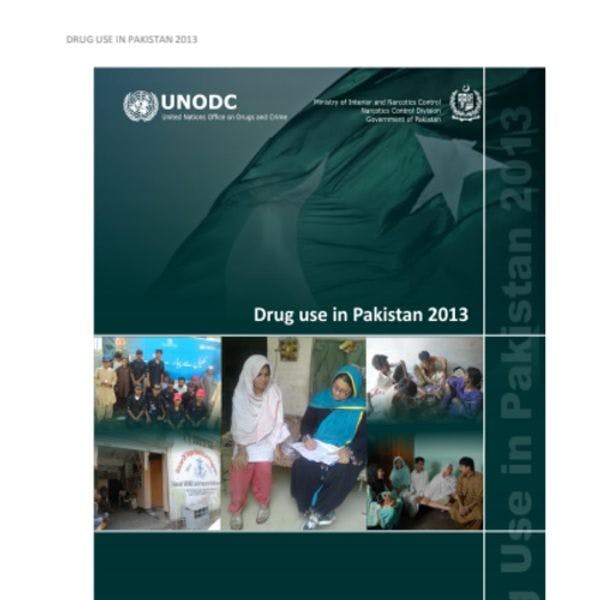Drug use in Pakistan 2013
In 2012, a comprehensive national study of drug use was conducted in Pakistan, providing reliable baseline information on the prevalence and patterns of drug use among the population aged 15 to 64. To generate these results, a series of surveys was conducted throughout the four provinces and Pakistan-administered Kashmir, including interviews of 4,533 high-risk drug users; 58 drug treatment centre representatives; 1,198 key informants; and 51,453 participants randomly selected from the general population.
The survey results show considerable past-year use of both plant-based drugs and medical prescription drugs, particularly of cannabis, prescription opioids (painkillers), tranquilizers and sedatives, and opiates (heroin and opium). Drug use in Pakistan is highly differential by gender.
The national population prevalence is a combination of very high levels of use of these substances among men, and generally low levels of use among women offset by considerable levels of misuse of prescription opioids and tranquilizers and sedatives among women.
Although Pakistan is a country with a large population of youth, drug use was more common among those between the ages of 25 to 39 than 15 to 24.
This report provides the basis for implementation of effective prevention, treatment and care services that are evidence-based.
Keep up-to-date with drug policy developments by subscribing to the IDPC Monthly Alert.
Downloads
Regions
Related Profiles
- United Nations Office on Drugs and Crime (UNODC)
